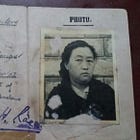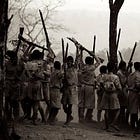Welcome to the Brown History Newsletter. If you’re enjoying this labor of love, please do consider becoming a paid subscriber. Your contribution would help pay the writers and illustrators and support this weekly publication. If you like to submit a writing piece, please send me a pitch by email at brownhistory1947@gmail.com. Don’t forget to check out our SHOP and our Podcast

Recommended Reads:
How Thailand Became a Hub for Indian Revolutionaries during WW1
“Let us unite and strike. This is our opportunity,” proudly proclaimed Ghadar di Gunj in their cry to Indians across the world, pleading them to unify in a battle against British colonial forces amidst the bloodstained First World War.
In May 1915, nine months after Britain entered the First World War, their extensive intelligence network acquired inputs about the possibility of mass mutinies by Indian servicemen. According to these intercepts, Germany and the Ghadar Party had hatched an insidious plot whereby armed revolutionaries would enter British India from Siam (now Thailand) and encourage Indian army personnel to revolt and seize power from the colonial authorities. In the early 20th century, Ghadar Party members found Thailand an ideal base to plot attacks on British colonialists in India.







